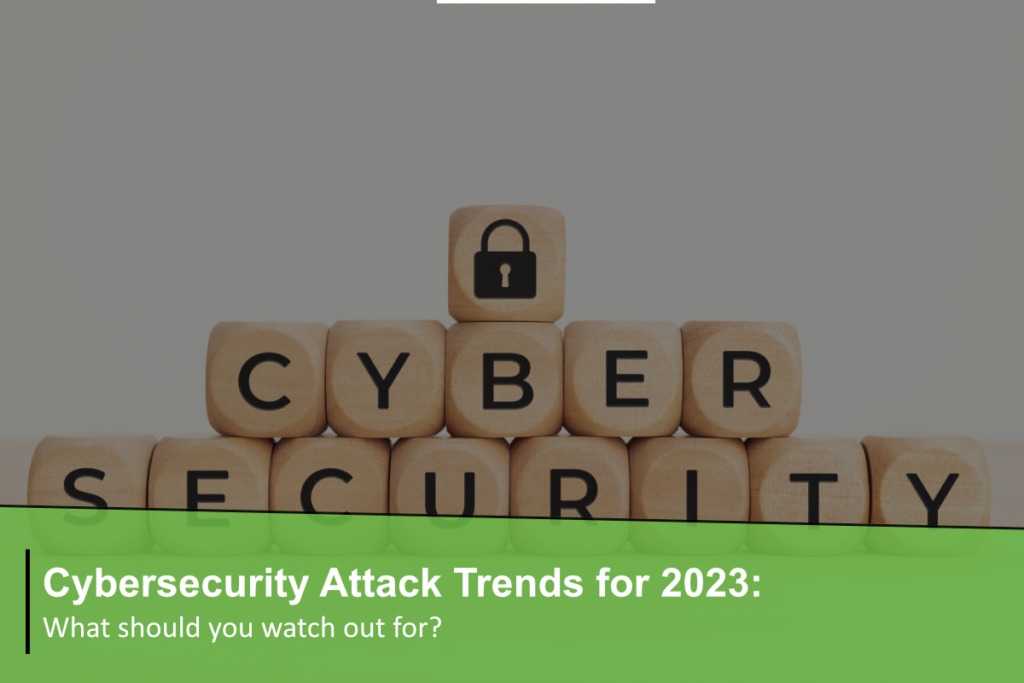A new year has just begun, and we are looking forward to what 2023 holds. In the face of ever-present cyberattacks, you must also plan for resilience.
Sixty-eight percent of business leaders believe cybersecurity risks are increasing. They have a good reason for doing so. The sophistication of attacks continues to increase. These crimes are also often committed by large criminal organizations. These criminal groups treat these attacks as a business.
Global cyberattacks increased by 15.1% in 2021.
In the coming year, it’s important to keep an eye on attack trends to make sure your business remains secure. What are the new methods hackers are using? Which types of attacks are increasing in volume? The importance of knowing these things cannot be overstated. By updating your IT security, you can mitigate the risk of a data breach or malware infection.
This year, we pulled out the security crystal ball. We’ve researched what cybersecurity experts expect. Here are some attack trends to keep an eye on.
Attacks on 5G Devices
There has been a lot of buzz about 5G over the past few years. Lightning-fast internet is finally beginning to materialize. As providers build out the infrastructure, this is expected to be a high-attack area.
Hackers are looking for ways to exploit the 5G hardware in routers, mobile devices, and PCs. There are always some code vulnerabilities when you have a new technology like this. Hackers target this exact vulnerability.
Be aware of the firmware security in the devices you buy in order to prepare. This is especially true for those with 5G capabilities. There are some manufacturers who build better firmware security into their designs than others. When purchasing new devices, be sure to ask about this.
One-time Password (OTP) Bypass
One of the best forms of account security is being bypassed by this alarming new trend. The use of multi-factor authentication (MFA) is well known for its effectiveness in preventing fraudulent sign-in attempts. Despite having the password, it is able to prevent accounts from being accessed by criminals.
In order to bypass MFA, hackers use a few different methods. Among them are:
- Token reuse: Reusing an OTP from a recent user
- OTP sharing: Hackers use their own accounts to get OTPs. Then tries to use the OTP with a different account.
- Leaked token: Using an OTP token that has been leaked through a web application.
- Hackers use phishing to trick users into resetting their passwords. They then trick them into sending their OTP via text or email.
Attacks Surrounding World Events
There was a 600% increase in cyberattacks during the pandemic. World events and disasters are profitable targets for large criminal hacking groups.
For world events, they launch phishing campaigns. There are attacks for everything from the recent hurricane or typhoon to the war in Ukraine. People often fall victim to these scams because they are unsuspecting. The crisis often distracts them.
Scams surrounding events like these should be avoided at all costs. To play on emotions, they will often use social engineering tactics, such as sad photos.
Smishing & Mobile Device Attacks
Nowadays, we carry our mobile devices almost everywhere. Cybercriminals take advantage of this direct connection to potential victims. Be on the lookout for more mobile device-based attacks, such as SMS-based phishing (“smishing”).
Most people don’t expect to receive fake messages to their personal numbers. However, cell numbers are no longer as private as they once were. A list of them can be purchased online by hackers. Then they craft convincing fake texts that resemble shipping notices or receipts. All it takes is one wrong click to compromise an account or data.
Malware on mobile devices is also on the rise. As of the beginning of 2022, malware targeting mobile devices has increased by 500%. Make sure you have good mobile anti-malware protection. Other protections on your devices, such as a DNS filter, are also recommended.
Elevated Phishing Using AI & Machine Learning
Phishing emails are harder to detect these days. There used to be a lot of spelling errors or grainy images in them. There are still a few who do, but the majority do not.
Artificial intelligence and machine learning are being used by criminal groups to elevate today’s phishing. Not only will it look identical to a real brand’s emails, but it will also be personalized. These tactics are used by hackers to capture more victims. Additionally, they allow hackers to send out more targeted phishing messages in less time.
Schedule a Cybersecurity Check-Up Today
Are you prepared for the cyber threats coming in 2023? Don’t wait until it’s too late! Stay one step ahead of the digital criminals by scheduling a cybersecurity check-up.

